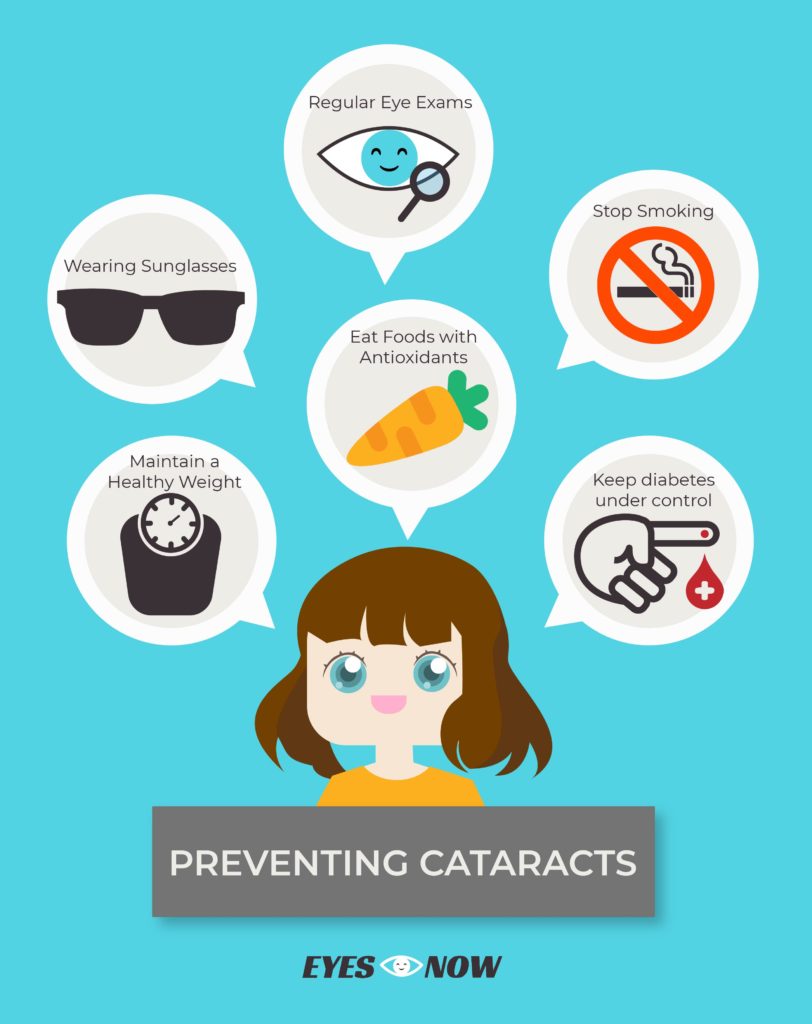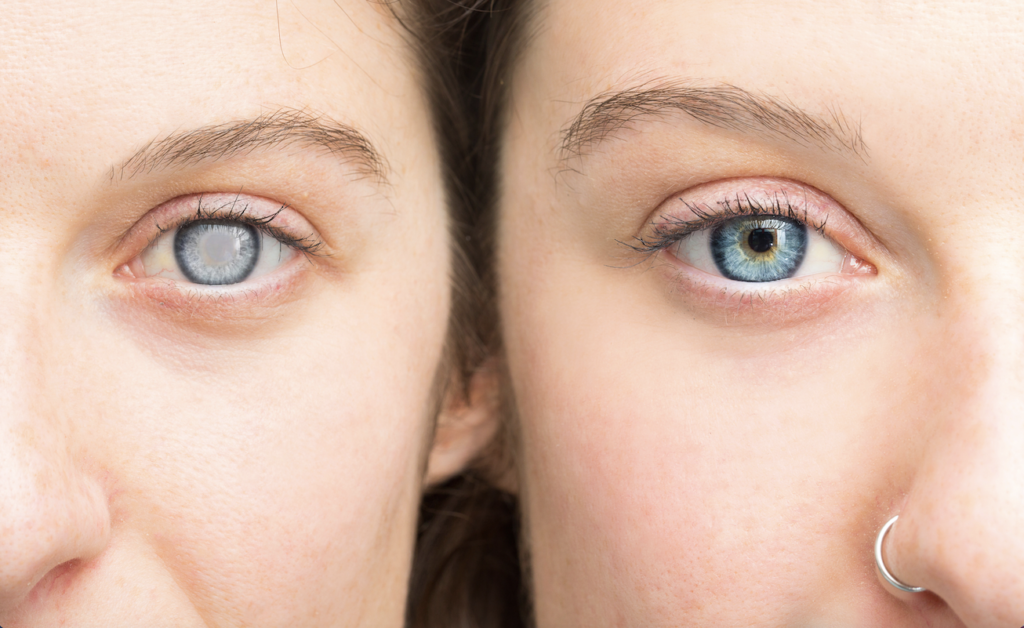Cataracts are a common occurrence that affects more than half of Americans age 80 or older. They occur when the natural crystalline lens of the eye becomes more rigid and less transparent, resulting in a milky film covering the eye.
By keeping up with regular eye exams, cataracts can be caught early and prevented from getting worse, before surgery is required.
Read more to learn about Cataracts, their symptoms, causes, and treatments!
Types of Cataracts
Although cataracts often develop in older individuals, different types of cataracts can be caused by different events (such as damage to the eye or unhealthy habits). Each type of cataract forms in your eye differently and will appear in different areas of the eye.
If you are at risk of developing one of the types of cataracts below, it is recommended that you make the required lifestyle changes, saving yourself from having to undergo surgery later in life. This can save you the frustration and discomfort that can come from cataracts.
Nuclear Cataracts
Creating a yellow or brown coloring, nuclear cataracts form in the middle of the lens (the nucleus).
Cortical Cataracts
Forming around the edges of the nucleus, cortical cataracts create a wedge shape in the eye.
Posterior Capsular Cataracts
Posterior cataracts affect the back of the lens and can be hard to discover on your own. These cataracts develop much faster than the other two types.
Congenital Cataracts
Noticeable in newborns, congenital cataracts appear either at birth or in the baby’s first year. These cataracts are much less common.
Secondary Cataracts
Secondary cataracts are caused either by medication or health conditions. Typically linked to glaucoma or diabetes, these cataracts can also be triggered by steroids.
Traumatic Cataracts
Caused by injury or damage to the eye, traumatic cataracts can take extra time to appear and develop.
Radiation Cataracts
Radiation cataracts are often caused by radiation treatment or other forms of radiation exposure.
Symptoms
Cataracts can be extremely frustrating to deal with as you age. While this is not direct eye pain, the vision restriction of cataracts makes it hard to enjoy everyday activities and live a normal life.
The symptoms of cataracts do not develop overnight, they take time to set in, making it hard to self prescribe immediately. However, taking note of your vision over time is important. Scheduling regular eye exams is another great way to catch the symptoms of cataracts.
Symptoms include:
- Blurry vision
- Trouble seeing at night
- Seeing colors as faded
- Increased sensitivity to glare
- Halos surrounding lights
- Double vision in the affected eye
- A need for frequent changes in prescription glasses
If you start to notice the symptoms above, please book an appointment for an eye exam.
Causes
Cataracts have a variety of causes, as each type is different and will develop differently. In general, there are simple causes that can be applied to multiple cataracts, putting your eyes in danger.
Some of the common causes include:
- Aging
- Runs in the family
- Diabetes
- Smoking
- Eye injuries, surgeries, or radiation treatment
- Spending time in the sun without protection
- Using medication such as steroids
If you are beginning to develop cataracts or if they run in your family, proactive steps can be taken to prevent your risk. While they can’t always be completely prevented, using the proper treatment and lifestyle methods will help you to avoid surgery in the future.

Treatment
Surgery
If you have developed a cataract, surgery must be undergone to properly treat your eye. This surgery requires the removal of your clouded lens, being replaced with an artificial lens (IOL). The new lens is made using your prescription, giving you the best chance for clear vision. Having cataract removal surgery is nearly painless, however, there is sometimes slight discomfort.
After undergoing the surgery with your ophthalmologist, it is important to keep in close contact with your optometrist for appointments and checkups on the healing process.
At Eyes Now, we manage this relationship for you and will walk you through the whole process with an ophthalmologist. Learn more about our cataract surgery co-management.

Prevention
The prevention of cataracts is largely similar to living a healthy lifestyle in general. Obviously taking care of your eyes is the most effective prevention method, but there are other aspects of your health that play into cataract development as well.
Making these changes in your lifestyle is an effective way to prevent and even fight cataracts:
- Wearing sunglasses
- Regular eye exams
- Stop smoking
- Eat foods with antioxidants
- Maintain a healthy weight
- Keep diabetes under control
Keeping Your Vision Clear
Protecting your eyes against cataracts is easy if you maintain a healthy lifestyle and visit your optometrist for regular eye exams.
However, if you are currently dealing with cataracts or develop them in the future, rest assured that safe and effective surgeries are available.
Looking for more information on cataracts or eye exams? Book an appointment with us!



